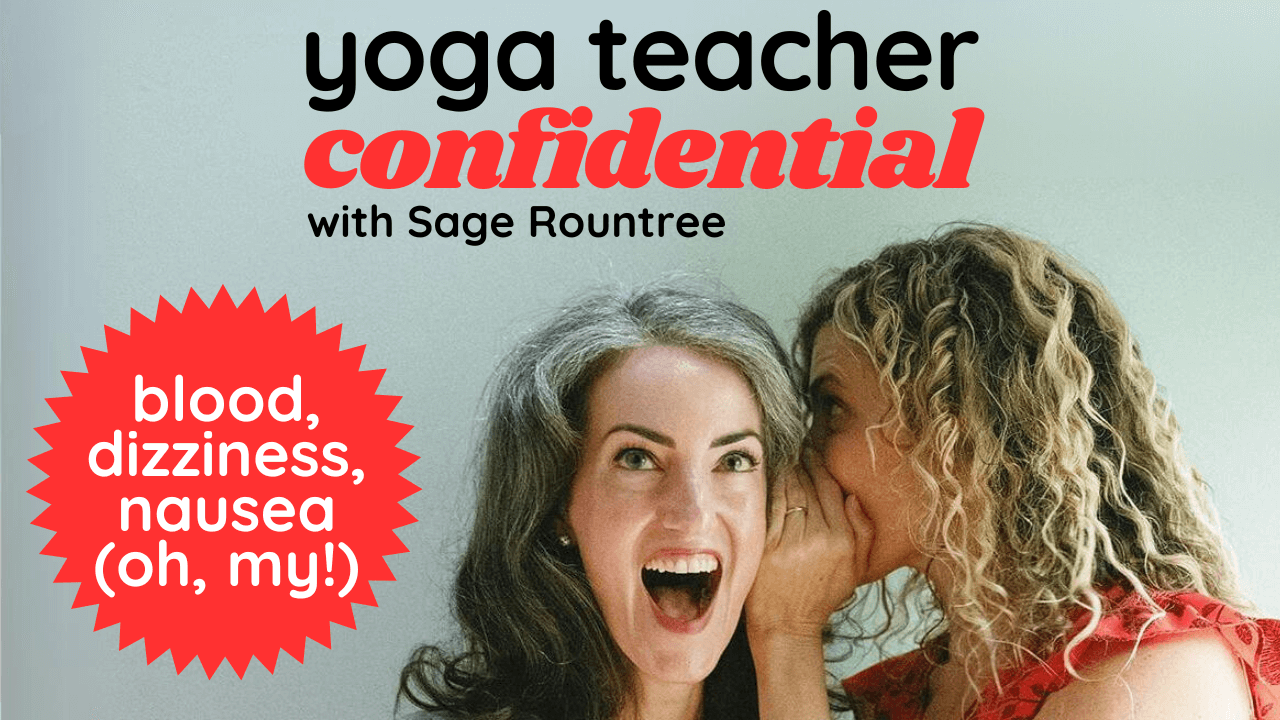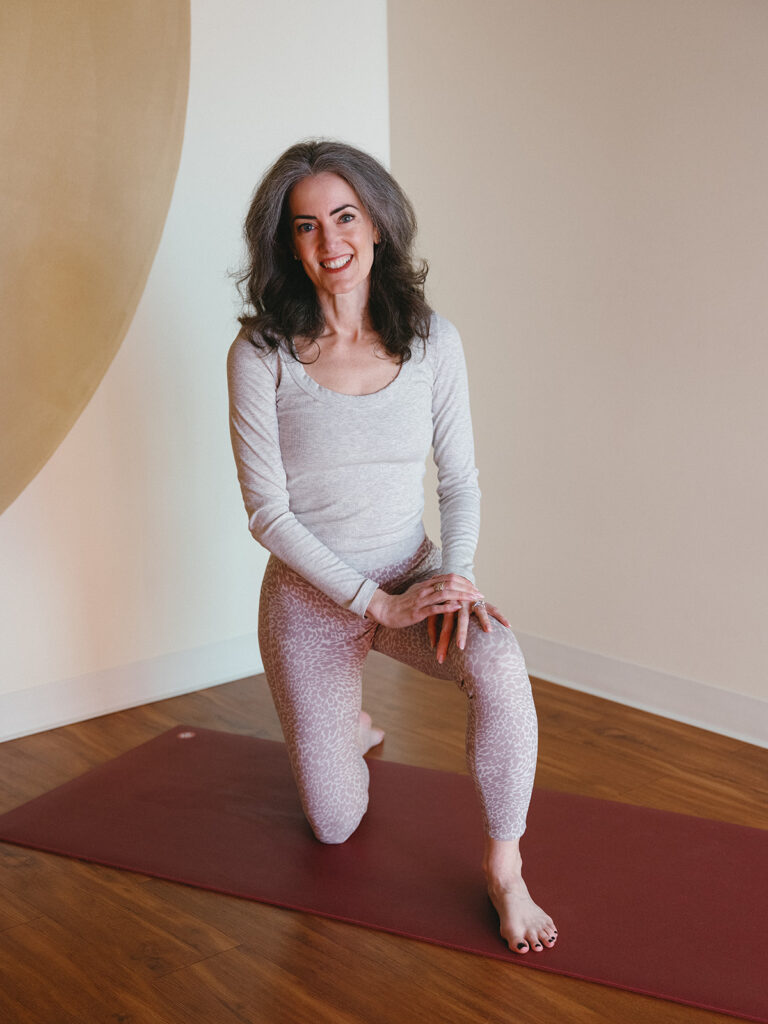When the Unexpected Happens in Yoga Class
You’re in the middle of teaching a quiet, focused class. Suddenly, a student turns pale. Another stops mid-pose and grabs their foot. Across the room, someone has a nosebleed. Or you spot a student silently crying in Savasana.
These moments catch all of us off guard.
And yet, minor medical situations—like dizziness, nausea, cramps, nosebleeds, or emotional releases—are surprisingly common in yoga classes. While they’re rarely true emergencies, how we respond to them speaks volumes about our professionalism, presence, and capacity to hold space.
In this post, I’ll walk you through how to recognize, respond to, and even prevent these classroom curveballs—without derailing your teaching or losing the group’s focus.
First, Let’s Reframe These Situations
Too often, we treat anything unexpected as a disruption. But minor issues are part of teaching real people with real bodies—and real emotions.
Instead of seeing them as distractions, view them as opportunities to model calm leadership and compassionate care. These are not interruptions to your teaching. They are your teaching.
When you approach them with clarity and steadiness, you show your students that the practice truly meets them where they are.
Common Classroom Scenarios and What to Do
Dizziness or Lightheadedness
This is perhaps the most common issue you’ll see, especially after inversions or in heated rooms. Look for:
- Unsteadiness or sudden sitting
- Sweating, pallor, or glazed expressions
- Verbal cues like “I feel dizzy”
How to respond:
Quietly approach and guide the student to sit or lie down. Elevate their legs if possible. Offer water. Normalize rest by saying something like, “You can always pause when you need to.” Continue class while keeping an eye on them.
Nosebleeds
Dramatic but rarely serious. These can happen in dry or heated environments or during inversions.
How to respond:
Get the student upright and out of inversions. Provide tissues and ask them to pinch their nose and lean forward. Avoid drawing attention. Continue class normally while subtly checking in. Once bleeding stops, they may rejoin—skipping inversions.
Muscle Cramps
Sudden cramps can make students panic or feel embarrassed.
How to respond:
Confirm with the student, then guide them to stretch the affected muscle. For example, a foot cramp may respond well to gentle dorsiflexion. Normalize by offering a cue to the whole class: “If your legs feel tight, feel free to use a strap here.”
Nausea
Students may go pale, swallow repeatedly, or freeze in place. This is common after twists, in hot rooms, or if they practiced on an empty stomach.
How to respond:
Encourage the student to lie on their side or sit in a comfortable position. Suggest slow nasal breathing or pressing on the P6 acupressure point on the wrist. Help them exit discreetly if they need the restroom.
Cuts and Scrapes
These happen more often than you’d think—especially on wood floors or with dry winter skin.
How to respond:
Help them clean and bandage the wound without disrupting class. Offer a collective pause with a low-effort pose or breath cue so you can assist. Double-check that blood isn’t getting on props or the mat.
Emotional Releases
Tears during Savasana or unexpected emotional waves are more common than we talk about—and absolutely normal.
How to respond:
Make eye contact. Offer space or support, depending on their preference. Continue teaching without centering the situation. You might say, “As we open physically, we may release emotions too. Everything that arises is welcome.”
What About Asthma or Breathing Difficulty?
If a student pulls out an inhaler or is breathing irregularly, approach quietly. Ask if they need anything. Most will be used to managing their symptoms. Offer a lower-intensity sequence for everyone so they can regroup and rejoin.
If symptoms worsen or escalate into distress, it may move into emergency territory (for that, refer to episode 34, on major emergencies).
Heat-Related Symptoms
In hot yoga or non-air-conditioned summer classes, students may overheat. If you see someone sweating excessively, struggling to breathe, or needing to sit down:
How to respond:
Guide them to remove layers, sip water, or place a cool towel on their neck. Suggest seated arm movements instead of standing postures. Consider dialing down the class intensity for everyone.
General Principles for Handling the Unexpected
Beyond specific protocols, here are some guidelines that will help you feel more confident navigating whatever arises:
- Be prepared: Keep a teacher’s kit (Band-Aids, tissues, hand sanitizer, maybe candy for blood sugar) nearby. Know where first aid supplies are stored.
- Use soft authority: Speak quietly to the affected student, and normally to the rest of class. This creates a calm container.
- Normalize rest and modification: When you regularly invite students to pause or adjust, no one feels self-conscious when they actually need to.
- Leverage community: If you know a regular is a nurse or healthcare worker, you can discreetly ask for backup.
- Follow up after class: A quick “How are you feeling now?” shows care without overstepping.
These Moments Define Your Teaching Culture
Ultimately, the way you handle minor issues shapes how your students feel in your class. Safe? Seen? Able to care for themselves without shame?
That’s the kind of classroom we want to create.
Let your calm presence lead the way.


